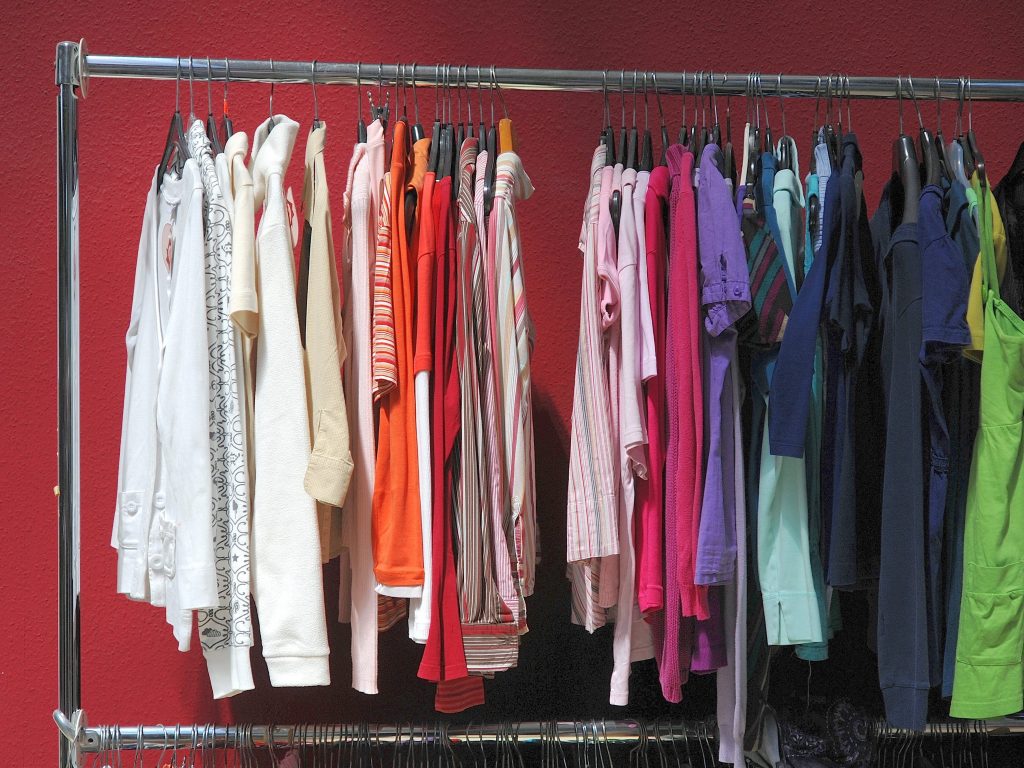- Contestants on a British dating show are wearing secondhand clothing in a partnership with eBay UK.
- Fashion's carbon footprint is bigger than international flights' and maritime shipping's combined.
- Analysts say fast-fashion companies are falling short on promises to tackle the climate crisis.
The singles looking for romance might be young, but their clothes aren't.
The secondhand-fashion market got a major endorsement on Monday as millions of viewers tuned into the new season of "Love Island UK," a competitive-dating show and British cultural phenomenon.
Contestants wore a mix of new and "pre-loved" clothing under a new partnership between "Love Island" and eBay UK aimed at promoting sustainability and shifting away from the fast fashion of seasons past, when brands like I Saw It First and Missguided supplied wardrobes for the cast.
Fans can download the show's app to shop a curated collection on eBay.
"As one of the original homes of pre-loved, we believe that by joining forces with this incredibly influential programme, we'll inspire the nation to think differently and make more conscious choices when it comes to their wardrobes," Eve Williams, the chief marketing officer at eBay UK, said in a statement announcing the partnership.
The premier came at an inflection point both for the fashion-resale market and the push to solve the climate crisis. More eco-conscious consumers are examining the clothes and accessories they buy because the fashion industry contributes 8 to 10% of global greenhouse-gas emissions, according to the UN Environment Assembly. That's more than the contributions of international flights and maritime shipping combined; and fashion uses more water than any industry except agriculture.
Luckily for shoppers wanting to curb their fast-fashion habit, it's now easier than ever to shop for pre-owned clothes online and digital tools that authenticate luxury goods help protect against fraudsters. The trade publication Business of Fashion expects sales to more than double to $57 billion by 2025.
A spokesperson for eBay UK said the company expects a "huge uplift" in searches for clothes seen on "Love Island," boosting a trend over the last year when searches for secondhand clothes multiplied eightfold, with younger members of Gen Z leading the charge. That led to keeping some 17,770 tons of fashion items out of UK landfills in 2021, the equivalent of 1,404 double-decker buses, she said.
Over 300,000 tons of fashion has-beens are sent to UK landfills each year, according to government data.
Several online marketplaces — including ThredUp, The RealReal, and Poshmark — have gone public in recent years with mixed performance on the stock market, yet a growing customer base. Last year, Etsy acquired London's Depop for $1.6 billion. Legacy brands and retailers are working with those companies or launching their own resale strategies to gain footholds, from Walmart's shop on ThredUp to Nike Refurbished and H&M's RE:WEAR.
Featuring secondhand clothes on "Love Island" is like advertising electric vehicles in the US during the Super Bowl, Karen Pearson, chair of the Fashion Institute of Technology's Sustainability Council, said.
"This is a way to promote sustainability to a broad audience and make resale accessible," she said. "Small changes by a lot of people can have a big impact."
The impact on sales may be significant, but the secondhand market still only accounts for a small fraction of the $2.5 trillion global-apparel industry. Since the early 2000s, the industry has doubled production and the majority of what it produces ends up in landfills or burned. The UN says the average consumer snaps up 60% more clothing than 15 years ago, but keeps each item for only half as long.
Previous "Love Island" contestants are intertwined with the fashion industry, often amassing millions of followers and leveraging that into deals promoting fast-fashion brands.
While expanding the resale market can help reduce the industry's carbon footprint, climate advocates and analysts say the industry's largest players have to do more to improve their environmental and social impact with a nudge from policymakers.
Earlier this month, an analysis of 30 companies on the Business of Fashion's sustainability index found a substantial gap between public promises to curb climate change and adopting more responsible business practices by 2030. The ranking included Abercrombie & Fitch, H&M, Lululemon Athletica, Nike, and Zara-parent Inditex on issues such as emissions, waste, water and chemical use, and workers' rights.
No company scored higher than 49 out of 100, with the five lowest performers scoring fewer than 10 points. That group included URBN, Skechers, Fila Holdings, Anta, and HLA Group, all of which had few, if any, public plans to address their environmental and social impact.
Consumers are catching on. Half of those who responded to ThredUp's January survey said fast fashion is harmful to the environment, and more than a third said the industry's sustainability claims feel like greenwashing. Yet many fast-fashion shoppers admit it's a hard habit to kick because of the bargain prices.
Pearson said fashion is one of many industries that's been slow to address climate change. But she expects business models to change as consumers demand more ethically made goods and government policies encourage greener manufacturing and make it more expensive to pollute.
"Brands want their products to be lusty and a status symbol," she said. "But if they don't meet customer expectations on sustainability, they may get left behind."
